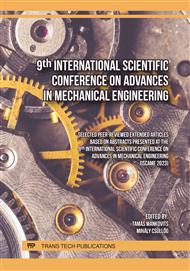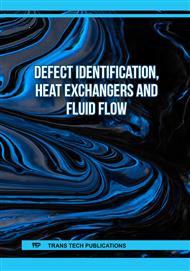p.91
p.101
p.111
p.123
p.131
p.141
p.153
p.161
p.171
Free Vibration of Composite Rectangular Plates with Internal Crack
Abstract:
In this work, rectangular sheets of composite materials consisting of epoxy with a single layer of fiberglass were studied with the internal crack at angles (0°, 90°) with the x-axis in the presence of nanomaterial TiO2 in proportions (1 wt%, 2 wt%, and 3 wt%), the study was experimental and numerical using the ANSYS. The sample mold was made from plastic using a CNC machine. One case was studied in both the experimental and numerical parts, which is clamped-clamped-free-free (CC-FF). After conducting the test, it was found that the crack negatively affects the rectangular composite plate, as it reduces the value of the natural frequency and increases the value of damping. However, in the case of adding the nanomaterial, it was found that the natural frequency increases with the increase in the percentage of nanomaterials, and the maximum value of the natural frequency was at 3% because it works to increase hardness rectangular plate stiffens and reduces damping. The error rate between the experimental and numerical parts did not exceed (9.717%).
Info:
Periodical:
Pages:
131-139
Citation:
Online since:
September 2024
Authors:
Keywords:
Price:
Сopyright:
© 2024 Trans Tech Publications Ltd. All Rights Reserved
Share:
Citation:



